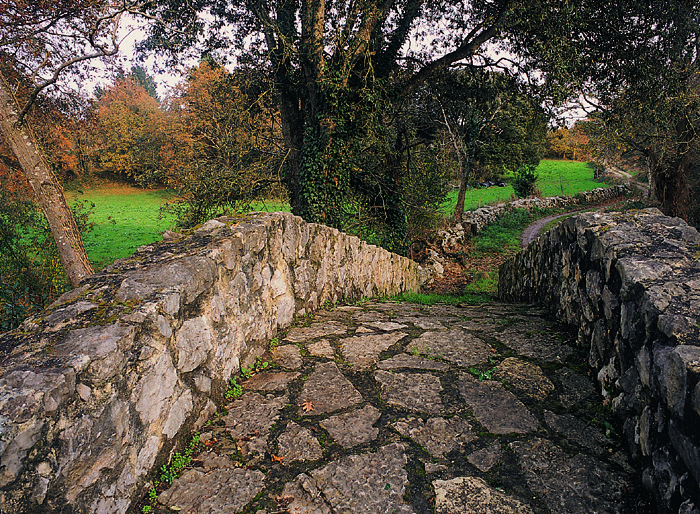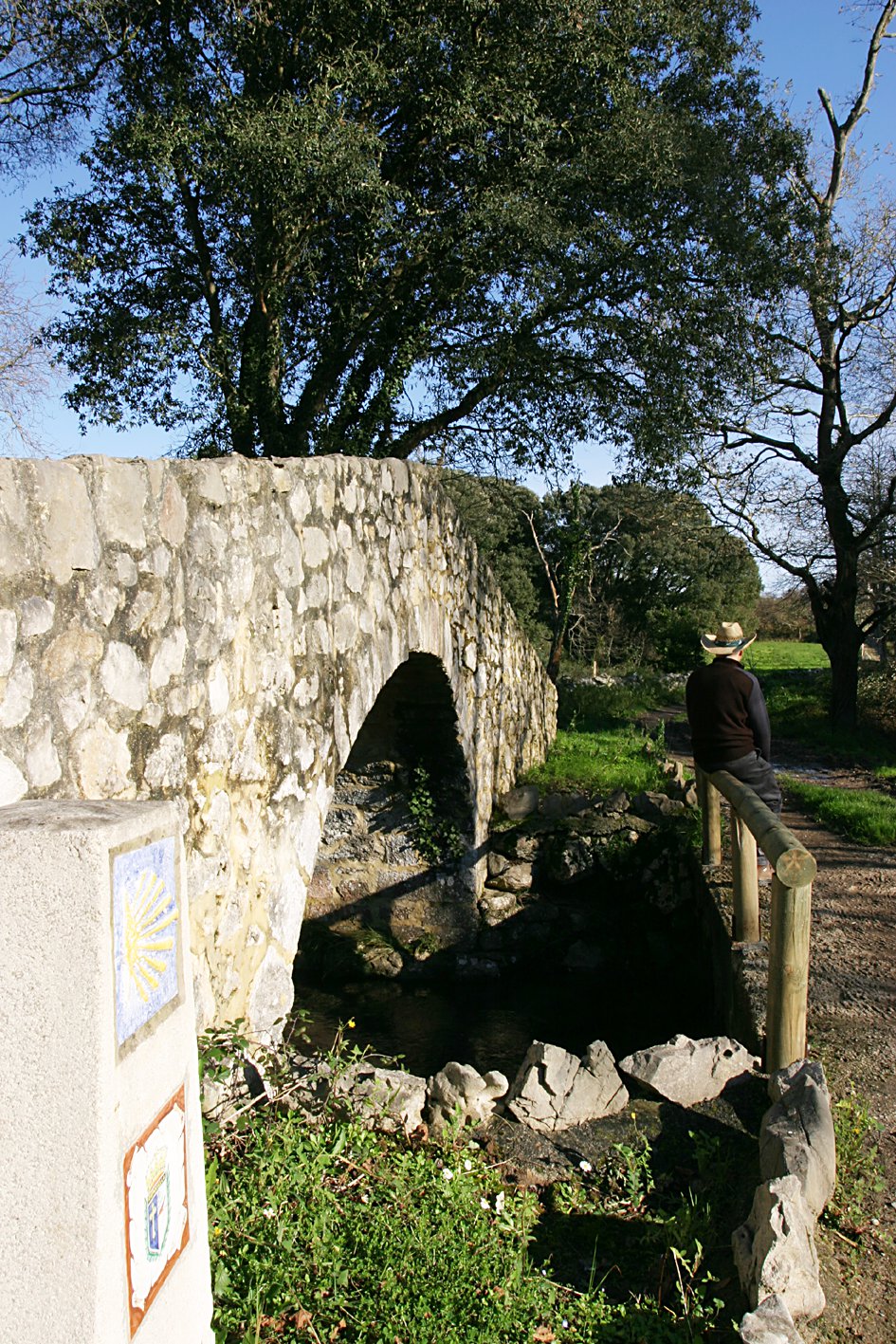Ribasedella´s Village is reached through El Portiellu neighborhood. The main entrance was before through San Juan and Cuetu, near the old church. By Trasmarina street or down by Oscura Street , both with architectural value, is located Prieto- Tatty´s Renaissance palace, in the centre of the village. Near to the new church there was a hospital for pilgrims from the fifteenth to the nineteenth century. It is admired inside by the colossal temple paintings of the brothers Uría- Aza, mid-twentieth century. Here visitors can walk through the old town area along old Calle Mayor, called nowadays Fernández Juncos, and La Atalaya. Admiring their facades and visiting Santa Ana´s Chapel, from the eighteenth century. Was recently restored and recently incorporated to Saint James Way
Until the mid- nineteenth century it was necessary to cross the river by boat and continue the path through the sand , but today is the bridge and the N -632 hichway . Beside the current secondary school allowed the national highway, the original layout is resumed and continue along the inner small road to the village of San Pedru , always west . Exceeded this pretty village , which was heading parish until the nineteenth century and today stands out for the love of flowers of its inhabitants, the road lines up a steep slope that leads to Abeu , a village with good houses and barns with magnificent views the sea and the mountain. From here is seen as the next point to visit the church of San Esteban Leces , Romanesque , who was head of a vast territory that gave rise to the administrative district of Ribadesella. There is in that place a medieval tower, Ruiz de Junco , Pilgrims and open to the public since 1999 , well located and cared for overnight .
From here it is recommended Forniellu´s path, a former Roman settlement. Walking along the paved road through Torre and Barreu, which formerly were real roads to the village and Vega´s beach. Until its destruction by the flood of 1988, the passage crossing Ribadesella´s river was made by a stone bridge built in the early nineteenth century, replaced nowadays by other less showy. Climbing to Berbes village on the old road between meadows there is a magnificent view to the sea. Parapetu is the next important place, where Napoleonic troops stationed for nearly a year and a half, in the War of Independence. It was an excellent location for surveillance both, roads and coast. From the village goes back to N -632 hichway by a spectacular passage carved into the rock, called Caleyona after which moves over Berbes place and reaches the bridge over Cerracín´s river. This is the limit from Ribadesella´s council with Caravia, where the road leaves the coast from Ribadesella´s lands.
@ texts: José Antonio Sastre Silva







